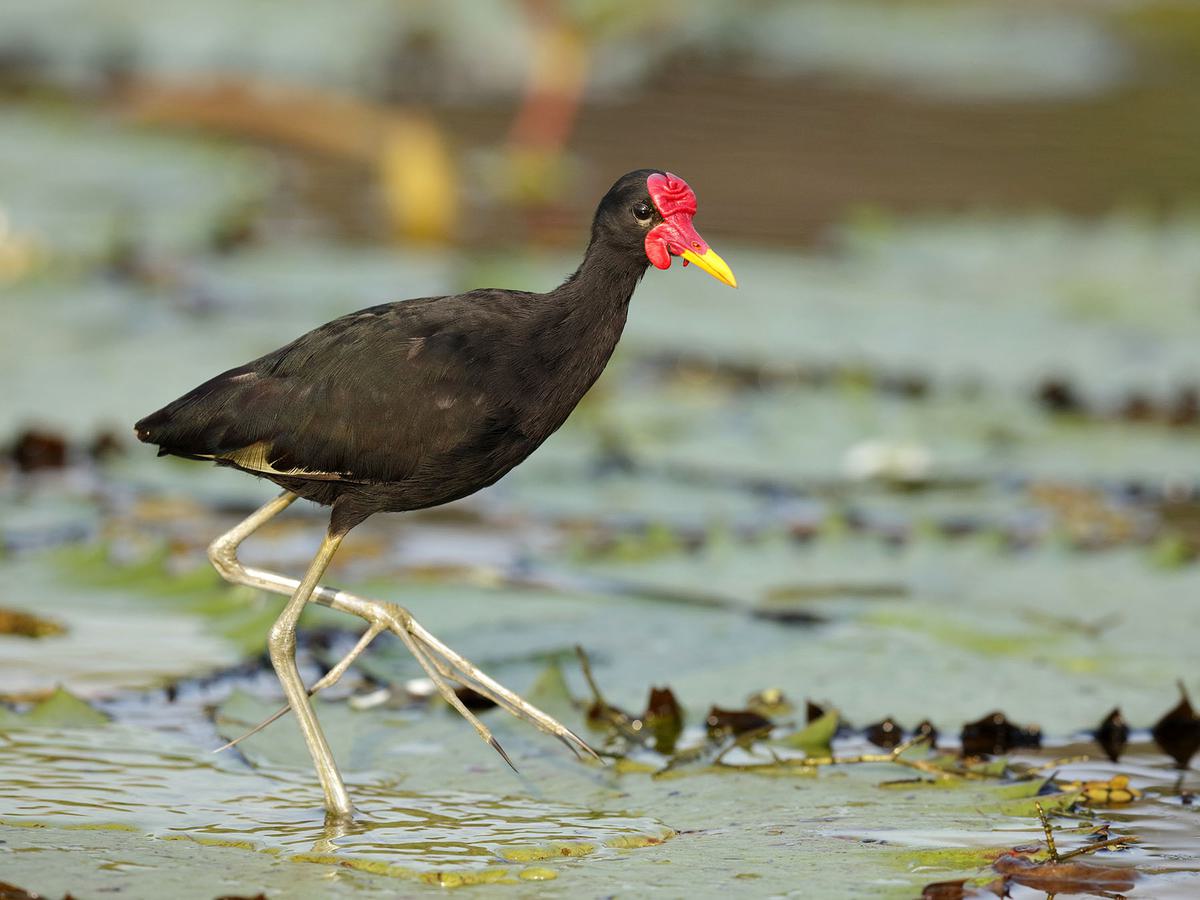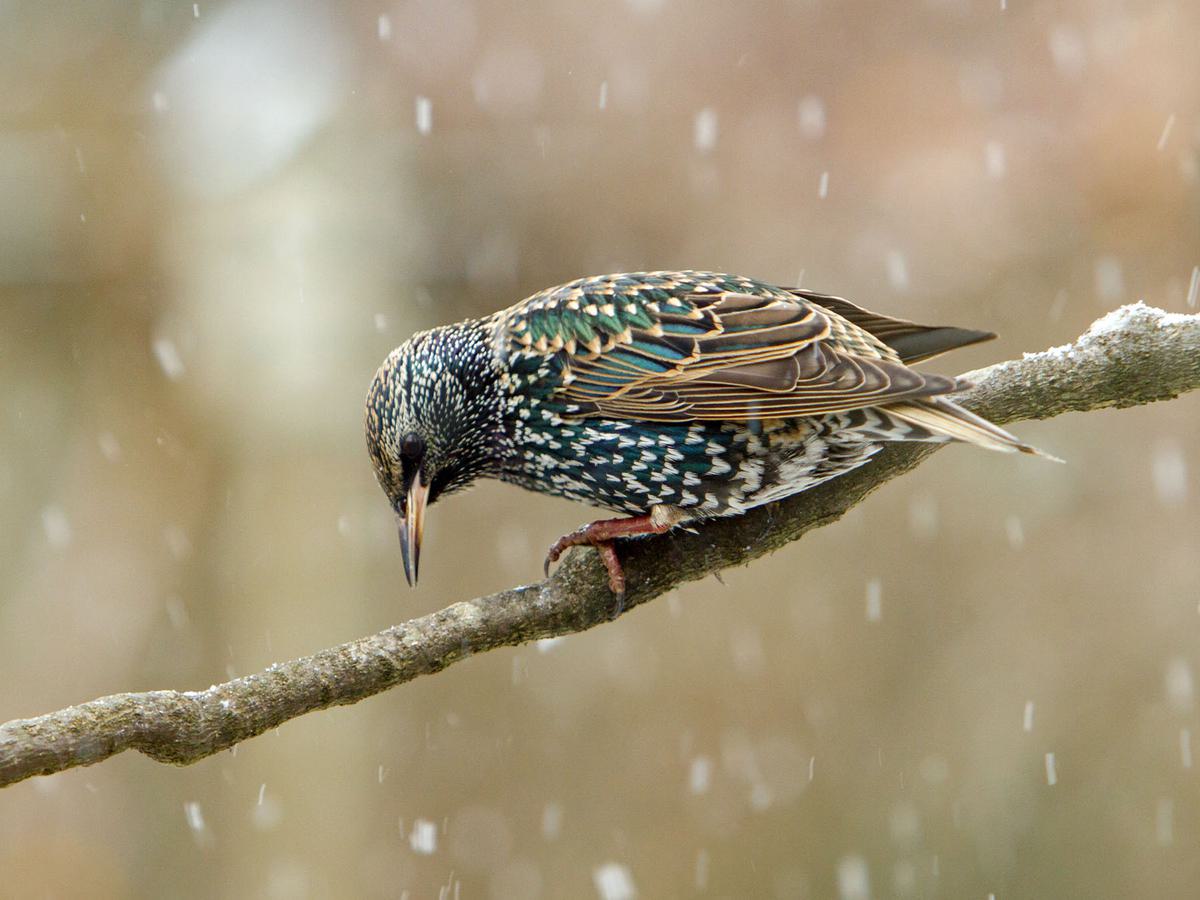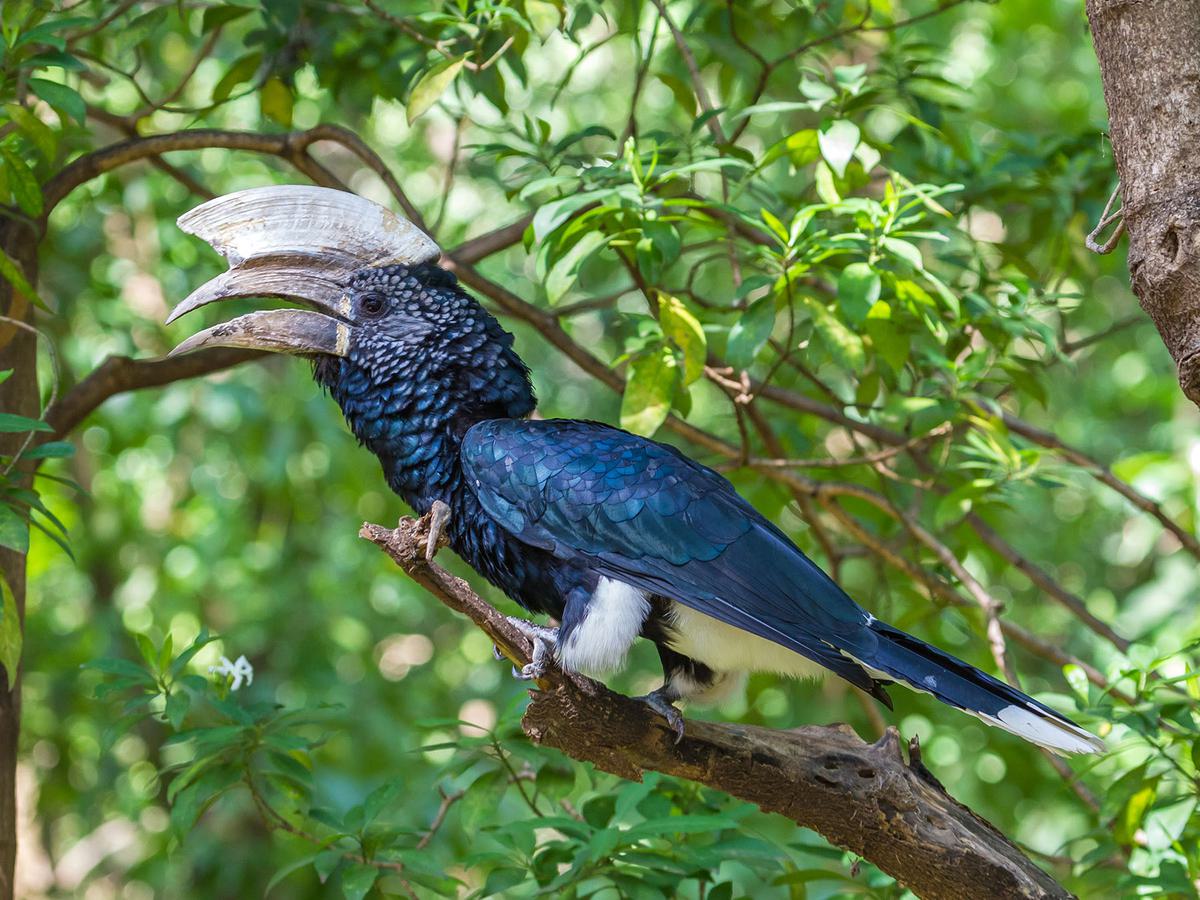Integumentary System

The integumentary system is the first thing you notice when you spot a bird. This outer covering of a bird’s body includes the skin, scales, feathers, and claws essential for everyday survival. The integumentary system has many vital functions, including insulation, protection from infections, flight, camouflage, and communication.
Most birds follow the same general pattern, with feathers covering all but their eyes, bill, and legs. However, there is a great diversity in the color and pattern of bird plumage, as well as the density of their feathers. Many species have also evolved specialized skin for displaying, keeping cool, and even keeping clean.
In this introductory guide, we’ll explore each of the major avian integumentary components and their functions. Read along to learn about bird feathers, skin, and much more!
Overview of the Avian Integumentary System
Components and Functions
A bird’s body is covered in skin, which has several vital functions, including protecting the body and sensing the outside world. Some areas of skin are left bare, but most of the body is covered in feathers. Birds have various types of feathers, which function as a form of insulation, waterproofing, tactile sensors, and tools for flight.
Birds’ legs and feet are typically unfeathered, as is the base of the bill, the bill itself, and often, an area surrounding the eye called an orbital ring. Some birds have unfeathered areas on the chest and head, as well as ornamental features like fleshy wattles.
Adaptation to Environments
Birds occupy a pretty extreme range of environments, from sub-zero Antarctic deserts to hot, tropical rainforests. These varied environments place different requirements on the integumentary system, with resulting adaptations like variable feather density, subcutaneous fat layers, and bare skin areas.

Birds occupy a pretty extreme range of environments, from sub-zero Antarctic deserts to hot, tropical rainforests. Emperor Penguins in South Georgia
Feather Anatomy and Diversity
Feather Structure
The feather is a specialized structure unique to the avian class. Birds may have anything from less than a thousand to about 80,000 feathers on their body, with the highest densities on Penguins that require excellent insulation in their icy habitats.
Each feather is embedded in the skin by a stalk-like structure called the calamus, which extends into a rachis that supports barbs that project outwards and may ‘zip’ into place to create a waterproof barrier. Insulating down feathers lack a rachis and have soft, fluffy barbs to keep birds warm.
Types of Feathers
There are several types of feathers, each with a different function. Down feathers cover the body and provide an insulating layer. They are covered by contour feathers, which insulate and protect the bird. Stiff, specialized flight feathers on the tail and wings are used to generate lift and thrust and control the direction of flight.
Birds also have specialized tactile feathers called filoplumes that provide sensory information about the position of their flight feathers, and whisker-like feathers called bristles, which surround the beak and eyes.
The Skin of Birds
Skin Structure
A bird’s skin is thin and elastic where covered in feathers but thickened in bare areas. It consists of an inner dermis and an outer epidermis. The outer cells are constantly shed, but the inner dermis is a living layer that includes blood vessels, nerves, and muscular attachments. Bird skin also contains glands like the uropygial gland used for preening feathers and wax-secreting glands near the ar openings.
Avian skin is usually pink or blueish-pink and relatively loose and flexible to allow the freedom of movement necessary for running, swimming, and flying. However, some birds have unusual skin features with specific uses in foraging or visual and auditory displays.
Examples of unique skin adaptations:
- A rooster’s wattle and comb are used to attract a hen’s attention
- A Pelican uses its pouched bill to scoop up fish and to keep cool
- The bare skin on a Vulture’s face and neck helps to prevent blood from matting in their plumage
Role in Thermoregulation
Bird skin plays a vital role in water conservation, but since birds do not sweat, it is not always efficient for cooling the body. However, bare skin areas like the legs are important for heat loss, so birds may stand in water or even defecate on their hindlimbs to cool off.
Skin also helps to keep birds warm by absorbing solar radiation and trapping their natural body heat. Air trapped between the feathers and skin creates an insulating barrier that can keep birds warm in icy weather.

Some birds have unusual skin features with specific uses in foraging or visual and auditory displays. A rooster’s wattle and comb are used to attract a hen’s attention
Other Integumentary Features
Scales
Most birds have a scaly keratinized covering over the unfeathered lower legs and feet called the podotheca. This tough skin is covered in thick scales, which have different sizes and shapes according to species. The largest scales are found on the front of the leg (tarsometatarsus), while smaller reticulate scales on the undersides of the toes form a tough but cushioning layer.
Beak
A bird’s beak is covered in an integumentary layer called the rhamphotheca. This keratinized skin is usually hard and tough, although some birds, like Ducks and Flamingos, have soft and rubbery bills. Bird beaks are extremely variable in size and shape, depending on factors like diet and foraging style.
Check out our in-depth guide on bird beaks to learn much more about their fascinating forms and functions!
Coloration and Camouflage
The skin and feathers play a vital role in mechanical protection, locomotion, and thermoregulation, but they’re also important for communication.
Birds come in every color of the rainbow, including colors we can’t perceive. Most birds have juvenile plumage that is distinct from their adult plumage, and many species show sexual dimorphism, where the sexes are easy to distinguish by plumage colors.
Bird colors may change with the seasons and are typically brightest before breeding when birds are pairing up. Birds may have colorful plumage, bare skin, or both, depending on their species and the time of the year.
Examples of birds with bright-colored skin and feathers:
- Arctic Terns develop bright red legs in the breeding season
- Cassowaries have colorful skin on their head and neck
- Peacocks, Painted Buntings, and Rainbow Lorikeets are among the most colorful birds on the planet
Bright colors are a great way to get noticed, but many birds prefer to go unseen by predators and prey. Many birds have amazing camouflage that blends into their environment.
Examples of birds with great camouflage:
- All owls have good camouflage, but species like the Western Screech Owl and Eurasian Scops Owl really know how to hide in plain sight.
- Snipes and Woodcocks are very difficult to spot as they forage in wetland and woodland habitats.
- Nightjars and other birds from the Caprimulgidae family are nocturnal birds that are nearly impossible to spot until they move.

Birds may have colorful plumage, bare skin, or both, depending on their species and the time of the year. Australian Rainbow Lorikeet

Many birds have amazing camouflage that blends into their environment. Egyptian Nightjar
The Molting Process
Overview of Molting
Whether they’re drifting along the sidewalk or floating on a pond, loose feathers are a common sight all over the world. Feathers are dead structures that break down over time, so birds shed and replace them regularly to keep their plumage in good shape.
The process of replacing feathers is known as molting, and this typical bird behavior happens at least once each year in smaller birds. Different birds follow different molting patterns, but no species molts all their feathers at once.
Integumentary Health and Disease
Common Disorders
The avian integument is vulnerable to the following common disorders and conditions:
Parasites
Mites, lice, and various other external parasites affect birds, either by digesting their feathers or by damaging their skin while feeding on blood.
Infections
Fungal infections like Malassezia, bacterial infections like Staphylococcus, and viral infections like Poxvirus may affect birds’ skin and feather follicles.
Trauma
Birds can damage their integument through physical injuries from predators, burns, collisions, and fights.
Behavioral problems
Captive birds may compulsively pluck their feathers, sometimes caused by an underlying physical condition or as a self-destructive behavior.
Care and Maintenance
Birds typically bathe and preen regularly to keep their skin and plumage clean and healthy. However, there are some things captive bird owners can do to promote better skin and feather health in their pets.
Captive birds should always have access to clean, fresh water for drinking and bathing and be fed a balanced and healthy diet appropriate for their species. Birds should be housed in hygienic conditions and in enclosures that are large enough for free movement and exercise.
Birds also need regular access to sunshine, but caution is necessary for caged birds that cannot escape the heat. You may wish to take your pet in for regular vet check-ups, but it’s always a good idea to consult a professional if you notice any obvious signs of skin or feather damage.

Captive birds should always have access to clean, fresh water for drinking and bathing and be fed a balanced and healthy diet appropriate for their species. Green Parrot
Summary
All bird watchers are familiar with the avian integument, but we rarely stop to consider its importance for avian survival. More than just an external covering, a bird’s skin, feathers, bill (rhamphotheca), and scales (podotheca) are vital for many behaviors and physiological processes.
Without the integumentary system, birds would be unable to maintain their body temperature, protect themselves against infections, find a meal, or do just about any of the things birds do.
So, next time you’re admiring an interesting avian, look further than its feathers and consider the importance of every external feature you can see!


